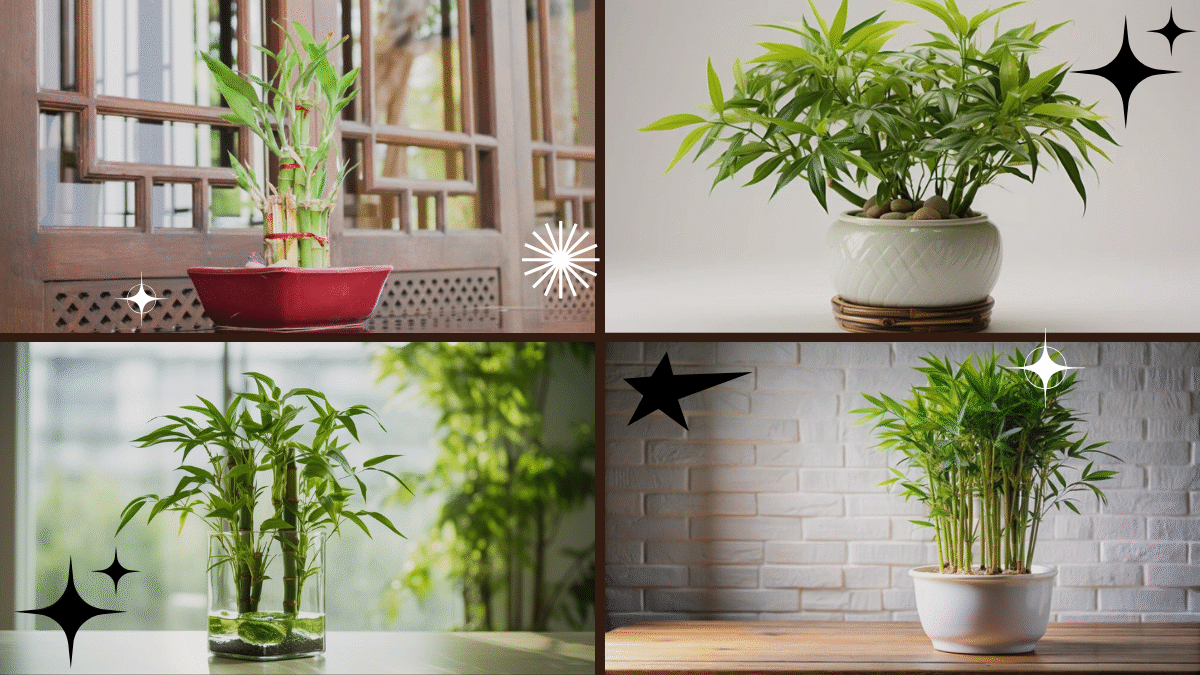If you’re searching for a plant that’s striking, fast-growing, and effortlessly elegant, look no further than bamboo. Synonymous with peace, tranquility, and good fortune, bamboo plants have long been admired for their graceful canes and lush green foliage. Whether used as a natural privacy screen outdoors or a chic tabletop accent indoors, bamboo adds a serene, Zen-like charm to any space.
Beyond its aesthetic appeal, bamboo is easy to grow, adaptable, and incredibly rewarding. In this guide, we’ll uncover how to grow bamboo successfully — whether in your garden, balcony, or inside your home.

Why Choose Bamboo?
Bamboo isn’t just visually stunning; it also offers a range of practical benefits:
- Fast-growing: Some varieties can grow several feet in a single season.
- Air purifying: Bamboo helps cleanse the air by filtering out toxins.
- Versatile: Can be grown indoors or outdoors, in soil or water.
- Symbolic: Represents good luck, resilience, and longevity in many cultures.
- Natural privacy screen: Outdoor bamboo varieties are perfect for hedges and fences.
Whether you want to create a leafy green oasis or a minimalist Zen corner, bamboo is an excellent choice.

Types of Bamboo Plants
Before you plant bamboo, it’s important to understand that there are two main types:
Running Bamboo
- Spreads aggressively through underground rhizomes.
- Great for fast privacy screens, but needs control to prevent it from taking over.
Popular varieties:
- Phyllostachys aurea (Golden Bamboo)
- Phyllostachys nigra (Black Bamboo)
Clumping Bamboo
- Grows in tight, non-invasive clusters.
- Ideal for small gardens, containers, and indoor displays.
Popular varieties:
- Bambusa ventricosa (Buddha’s Belly Bamboo)
- Bambusa multiplex (Hedge Bamboo)
Lucky Bamboo (Dracaena sanderiana):
Often mistaken for true bamboo, this popular indoor plant thrives in water or soil and is prized in Feng Shui for bringing luck and positivity.

Ideal Growing Conditions for Bamboo
Bamboo is highly adaptable but thrives when given the right conditions.
Light:
- Most bamboos prefer bright, indirect sunlight or filtered light.
- Outdoors, choose a spot with partial shade to full sun, depending on the variety.
Temperature:
- Hardy varieties tolerate temperatures as low as -10°F (-23°C).
- Tropical species prefer warmer, humid climates.
Soil:
- Bamboo loves well-draining, fertile soil rich in organic matter.
- Ideal pH: 6.0–6.5
Water:
- Requires consistent moisture, but dislikes soggy, waterlogged soil.
- Indoors, keep the soil evenly moist or maintain water levels if grown hydroponically.

How to Plant Bamboo Outdoors
Choose Your Site:
Pick a spot with good drainage, partial sun, and enough room for your bamboo to spread or cluster.
Prepare the Soil:
Enrich the soil with compost or organic matter. Bamboo appreciates loose, aerated soil for rhizome growth.
Dig the Hole:
For container-grown bamboo, dig a hole twice as wide as the root ball. For bare-root plants, make a hole deep enough to accommodate the rhizomes.
Plant and Water:
Position the bamboo upright and backfill with soil. Water deeply to settle the roots.
Apply Mulch:
A layer of organic mulch helps retain moisture and suppress weeds.
Containment Tip:
For running varieties, install a rhizome barrier (plastic or metal) 24–36 inches deep around the planting area to keep the bamboo from spreading uncontrollably.
How to Grow Bamboo Indoors
Indoor bamboo (especially Lucky Bamboo) adds a fresh, modern touch to your home.
For soil planting:
- Choose a wide, shallow pot with drainage holes.
- Use a well-draining potting mix enriched with perlite or sand.
- Keep in bright, indirect sunlight.
- Water when the top inch of soil feels dry.
For water growing (Lucky Bamboo):
- Place the stalks in a glass container filled with filtered or distilled water.
- Keep water at least 1 inch above the roots.
- Change water weekly to avoid rot and algae buildup.
- Avoid direct sun and place near a window with filtered light.
Watering Bamboo
Bamboo loves moisture but detests waterlogged roots.
Outdoor Bamboo:
- Water deeply 1–2 times a week in dry conditions.
- Increase frequency during hot, dry spells.
Indoor Bamboo:
- Keep soil evenly moist, but not soggy.
- Reduce watering in cooler months when growth slows.
Lucky Bamboo:
- Change water every 7–10 days.
- Ensure roots are always submerged.
Fertilizing Bamboo
Outdoor Bamboo:
- Apply a balanced, slow-release fertilizer in spring and mid-summer.
- High nitrogen content encourages lush foliage.
Indoor Bamboo:
- Use a diluted liquid houseplant fertilizer monthly during the growing season (spring to fall).
- Avoid overfeeding, which can lead to yellowing leaves.
Lucky Bamboo:
- Use a mild liquid fertilizer every 2 months, or a special Lucky Bamboo fertilizer.
Pruning and Maintenance
Outdoor Bamboo:
- Remove weak, dead, or overcrowded canes annually.
- Thin out older canes to allow light and air circulation.
Indoor Bamboo:
- Trim yellow or wilted leaves.
- Cut overly tall stalks back to maintain shape and size.
Lucky Bamboo:
- Prune offshoots to maintain a tidy appearance.
- Remove yellowed leaves promptly.
Common Pests and Problems
Though generally hardy, bamboo can encounter a few issues:
Pests:
- Spider mites: Fine webbing and speckled leaves.
- Aphids: Sticky residue on leaves.
- Mealybugs: White, cottony clusters.
Remedies:
- Wipe leaves with soapy water.
- Use neem oil or insecticidal soap for severe infestations.
Problems:
- Yellowing leaves: Overwatering, poor drainage, or lack of nutrients.
- Leaf curl: Low humidity or underwatering.
How to Propagate Bamboo
By division (Outdoor Bamboo):
- Dig up a clump in early spring.
- Separate rhizomes with a sharp spade.
- Replant immediately, water well.
Lucky Bamboo:
- Cut healthy stalks just below a node.
- Place in water until roots form.
- Transfer to soil or continue growing in water.
Benefits of Growing Bamboo at Home
- Natural air purifier
- Reduces stress and enhances relaxation
- Attracts positive energy according to Feng Shui
- Adds a modern, organic touch to interiors
- Provides privacy and wind protection outdoors
Final Thoughts
Whether you choose a towering outdoor bamboo for your garden or a delicate Lucky Bamboo for your coffee table, this versatile plant brings timeless beauty and positive energy to any environment. With minimal care and a bit of mindfulness, you’ll enjoy lush greenery, cleaner air, and a serene Zen-like atmosphere in your living space.
Ready to add a bamboo plant to your collection? Pick your favorite variety, follow these simple care tips, and let this symbol of peace and prosperity thrive in your home or garden!





Leave A Comment